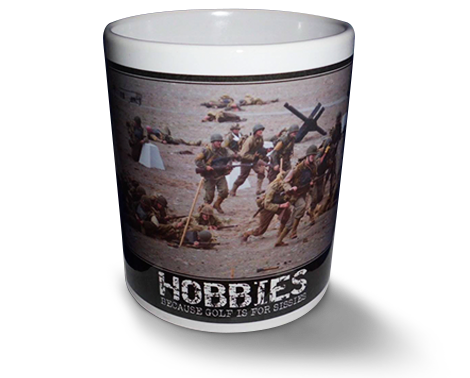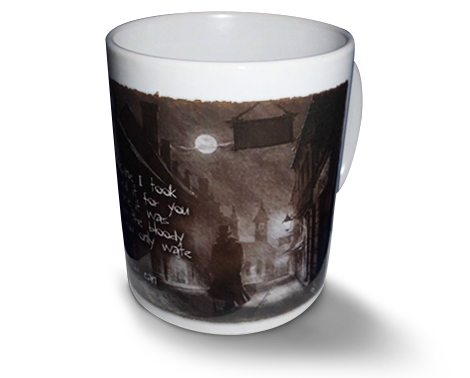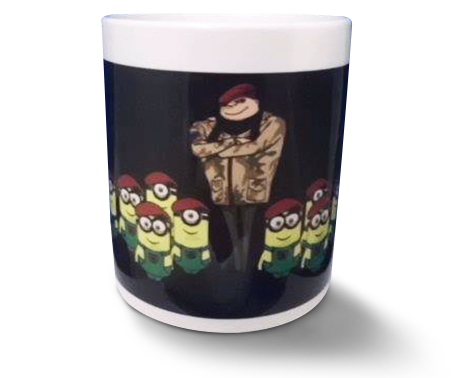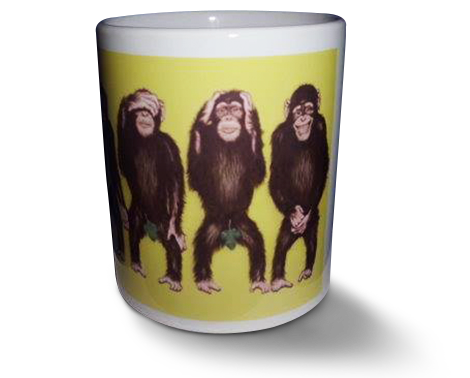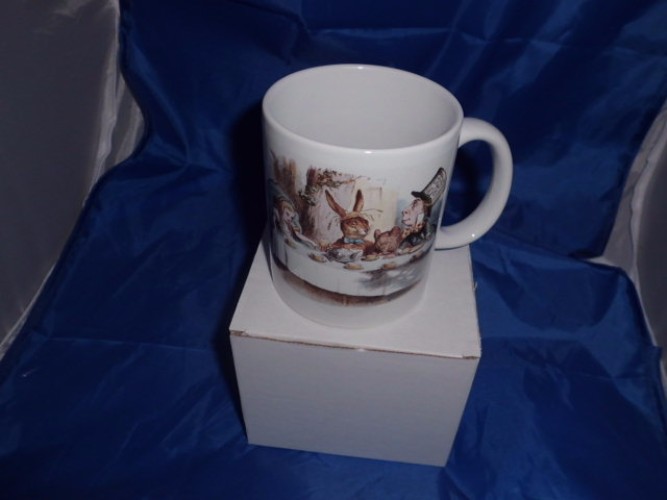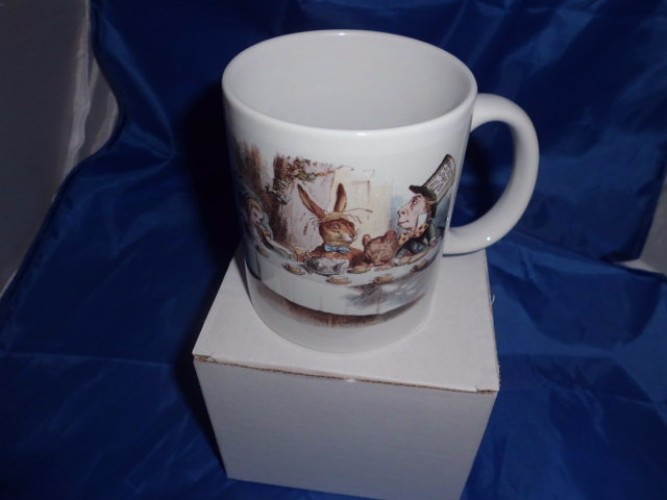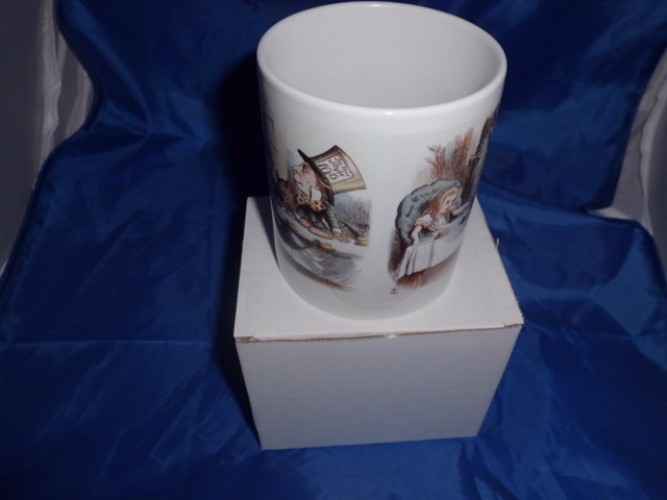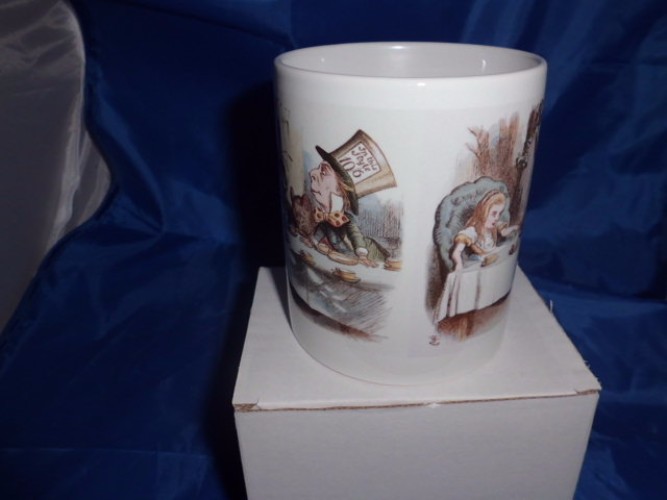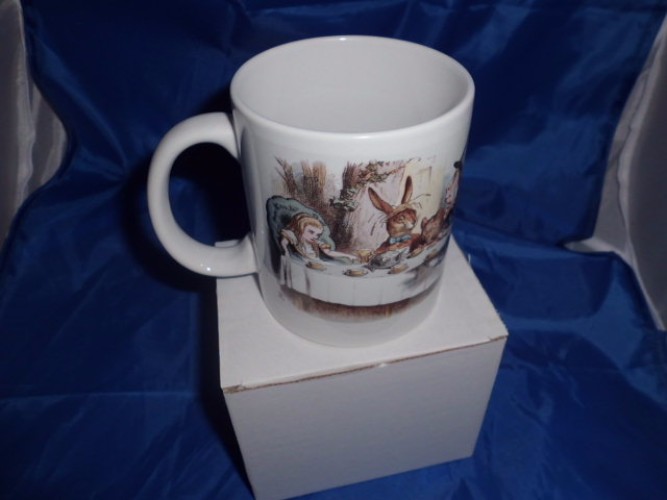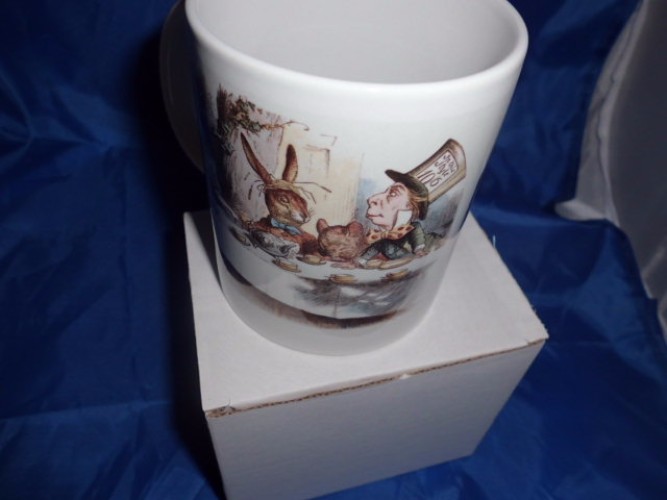Mad Haters Tea Party personalised mug
11oz mug
The mugs we use are top quality bright white, Orca coated, and are Dishwasher and Microwave safe, the high quality images are bonded into the surface of the mug, and do not fade or peel off like transfers
GREAT FOR GIFTS, BIRTHDAYS, OR JUST TO ADD TO YOUR MEMORABILIA COLLECTION.
The artwork is created in our offices/workshop, and we are available for custom work. These designs are individually made, not mass produced.
Please note that I take great care in packaging the mugs they are sent in a polystyrene mug box designed to specifically for posting mugs hence the postage costs
The Hatter is a character in Lewis Carroll's Alice's Adventures in Wonderland and its sequel Through the Looking-Glass. He is often referred to as the Mad Hatter, though this term was never used by Carroll. The phrase "mad as a hatter" pre-dates Carroll's works and the characters the Hatter and the March Hare are initially referred to as "both mad" by the Cheshire Cat, with both first appearing in Alice's Adventures in Wonderland, in the seventh chapter titled "A Mad Tea-Party".
Hatter character, alongside all the other fictional beings, first appears in Lewis Carroll's 1865 novel Alice's Adventures in Wonderland. In it, the Hatter explains to Alice that he and the March Hare are always having tea because when he tried to sing for the Queen of Hearts, the foul-tempered monarch, at her celebration she sentenced him to death for "murdering the time", but he escapes decapitation. In retaliation, time (referred to as a "he" in the novel) halts himself in respect to the Hatter, keeping him and the March Hare stuck at 18:00 (or 6:00 pm) forever.
When Alice arrives at the tea party, the Hatter is characterised by switching places on the table at any given time, making short, personal remarks, asking unanswerable riddles and reciting nonsensical poetry, all of which eventually drives Alice away. The Hatter appears again as a witness at the Knave of Hearts' trial, where the Queen appears to recognise him as the singer she sentenced to death, and the King of Hearts also cautions him not to be nervous or he will have him "executed on the spot".
Mercury was used in the manufacturing of felt hats during the 19th century, causing a high rate of mercury poisoning in those working in the hat industry. Mercury poisoning causes neurological damage, including slurred speech, memory loss, and tremors, which led to the phrase "mad as a hatter". In the Victorian age, many workers in the textile industry, including hatters, often suffered from starvation and overwork, and were particularly prone to develop illnesses affecting the nervous system, such as tuberculosis, which is portrayed in novels like Alton Locke by Charles Kingsley and North and South by Elizabeth Gaskell, which Lewis Carroll had read. Many such workers were sent to Pauper Lunatic Asylums, which were supervised by Lunacy Commissioners such as Samuel Gaskell and Robert Wilfred Skeffington Lutwidge, Carroll's uncle. Carroll was familiar with the conditions at asylums and visited at least one, the Surrey County Asylum, himself, which treated patients with so-called non-restraint methods and occupied them, amongst others, in gardening, farming and hat-making. Besides staging theatre plays, dances and other amusements, such asylums also held tea-parties.

